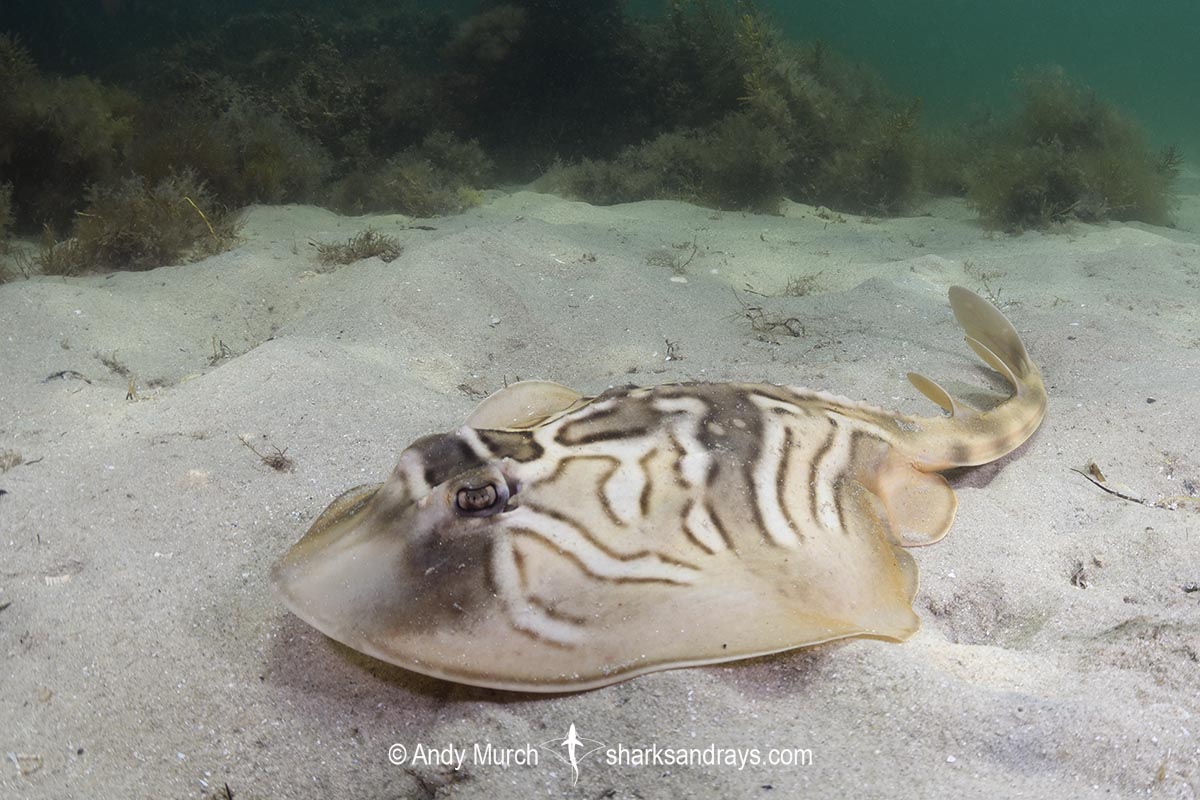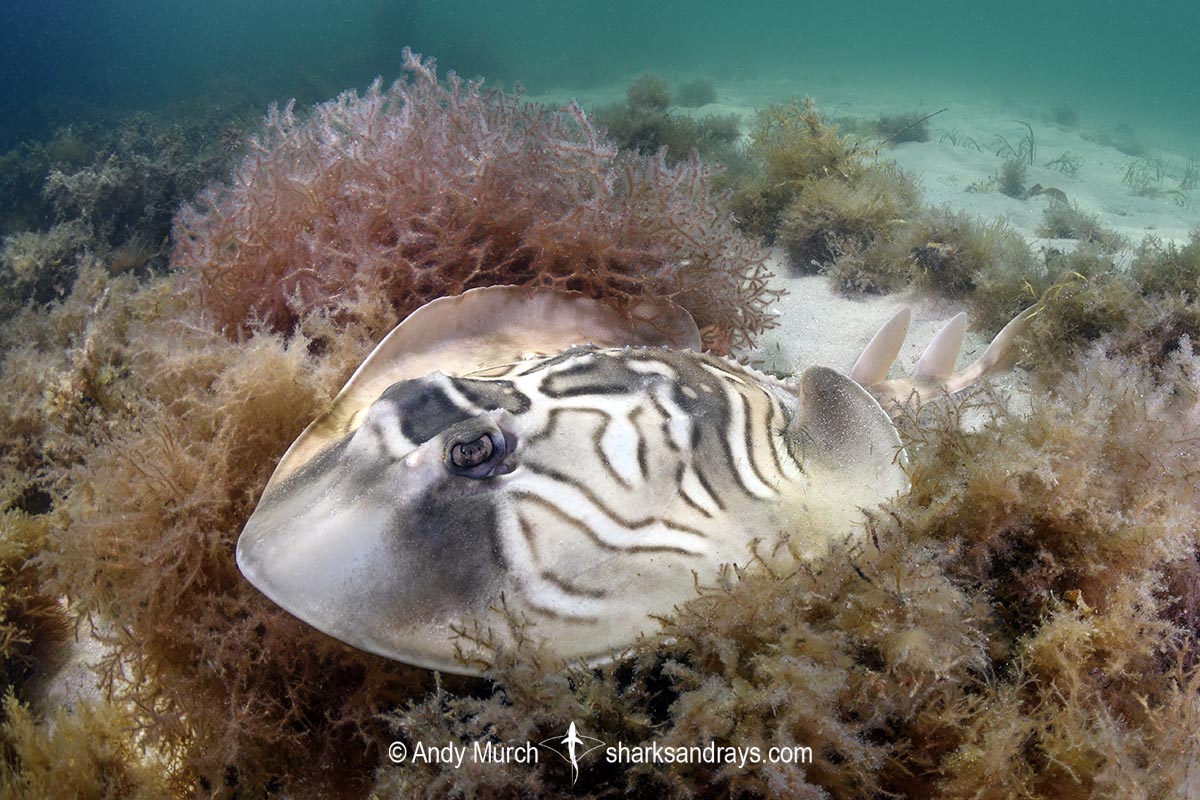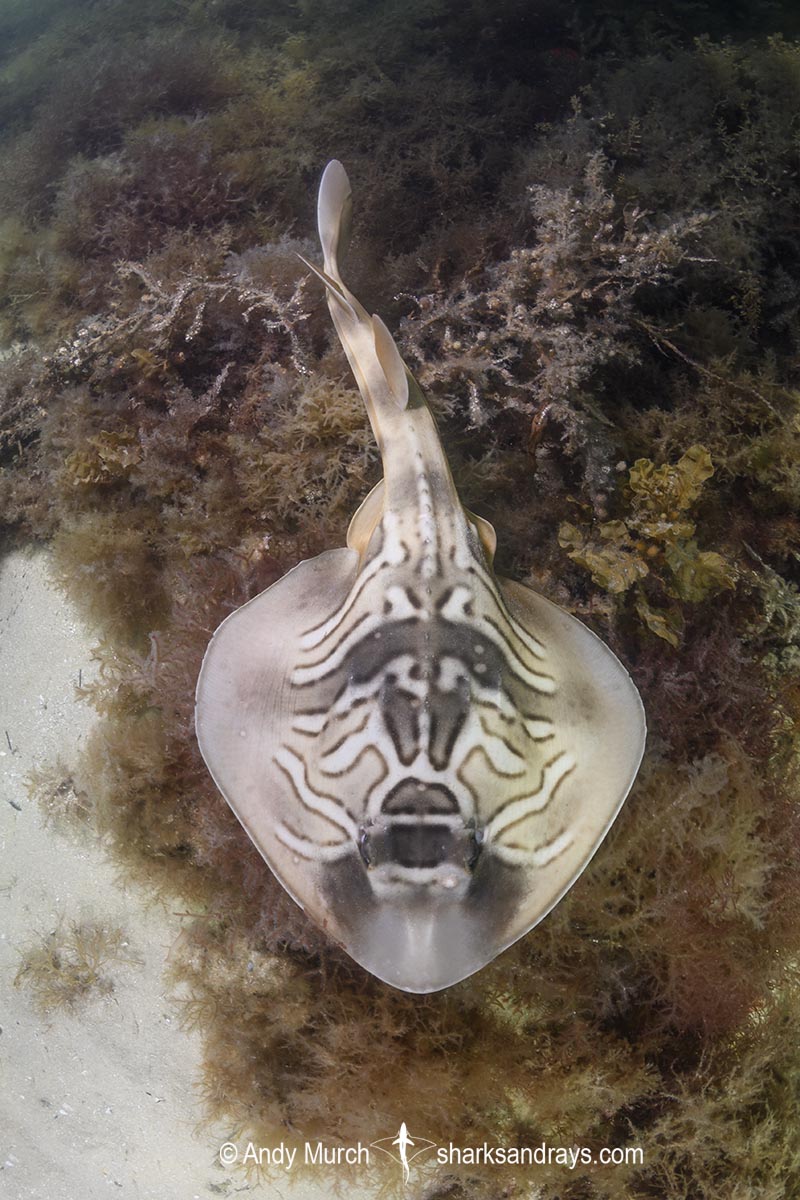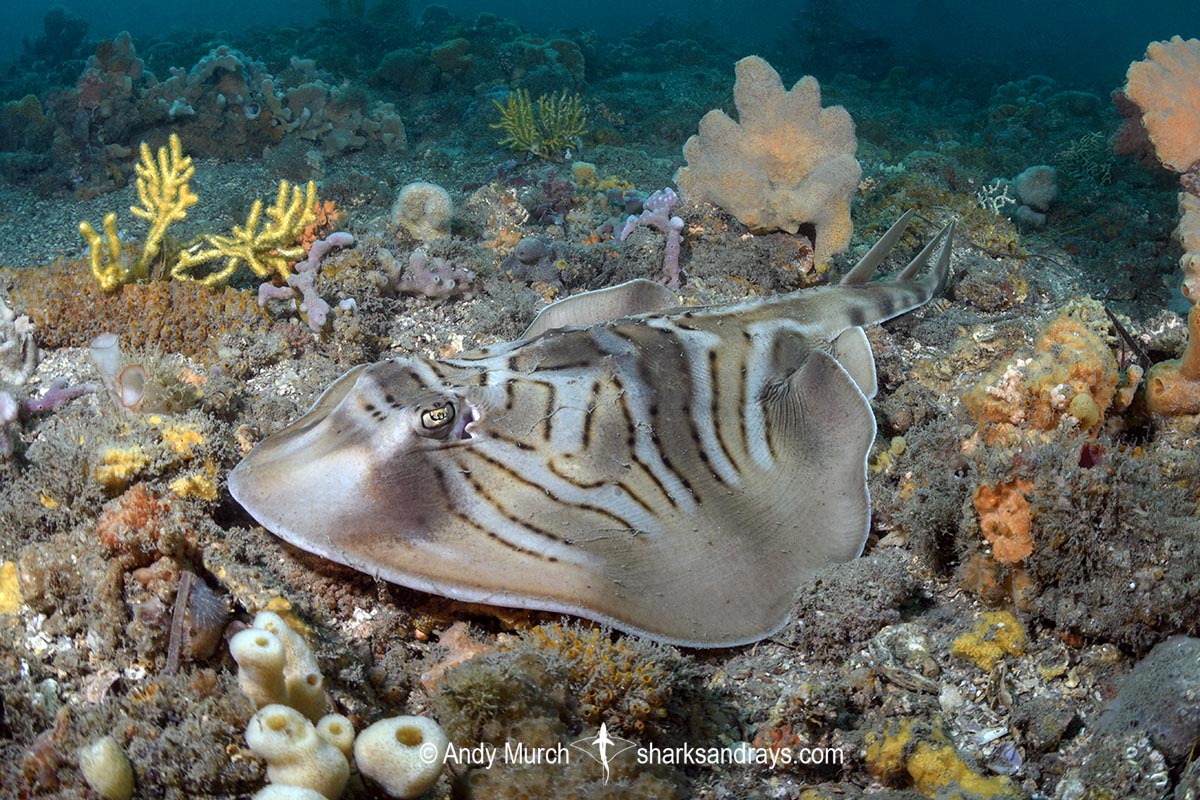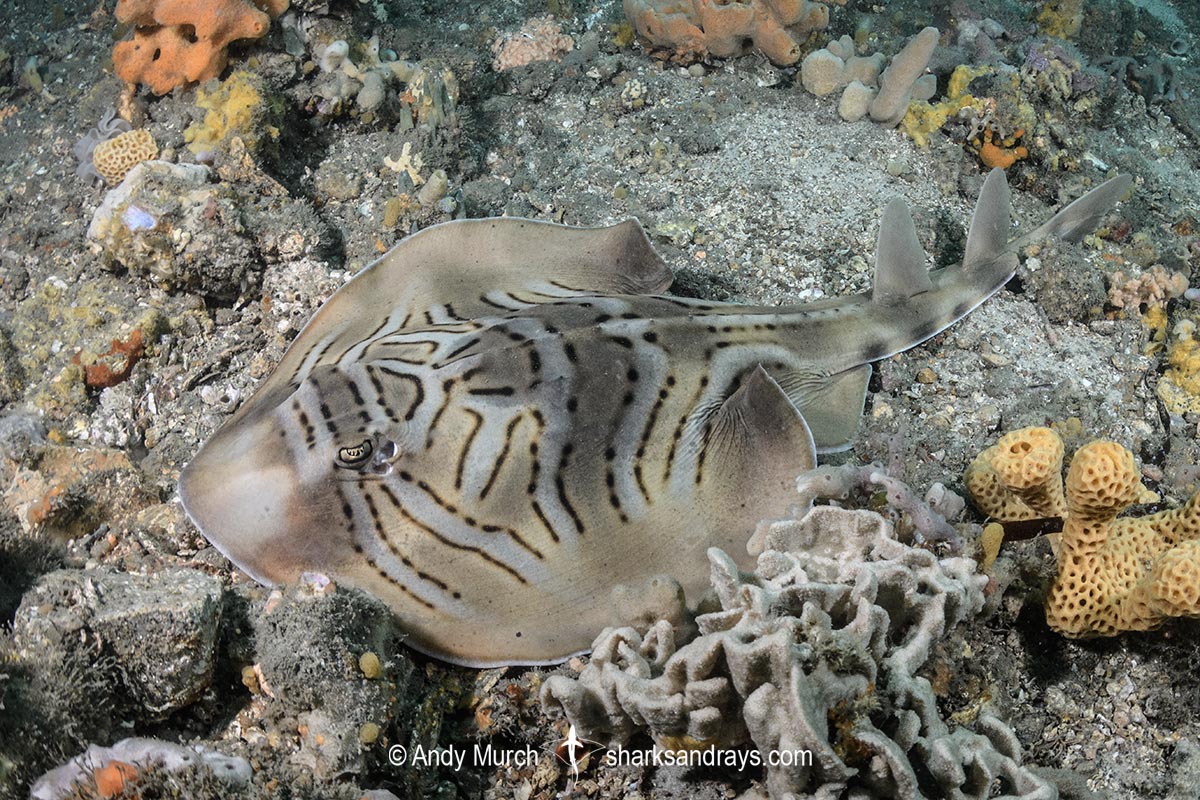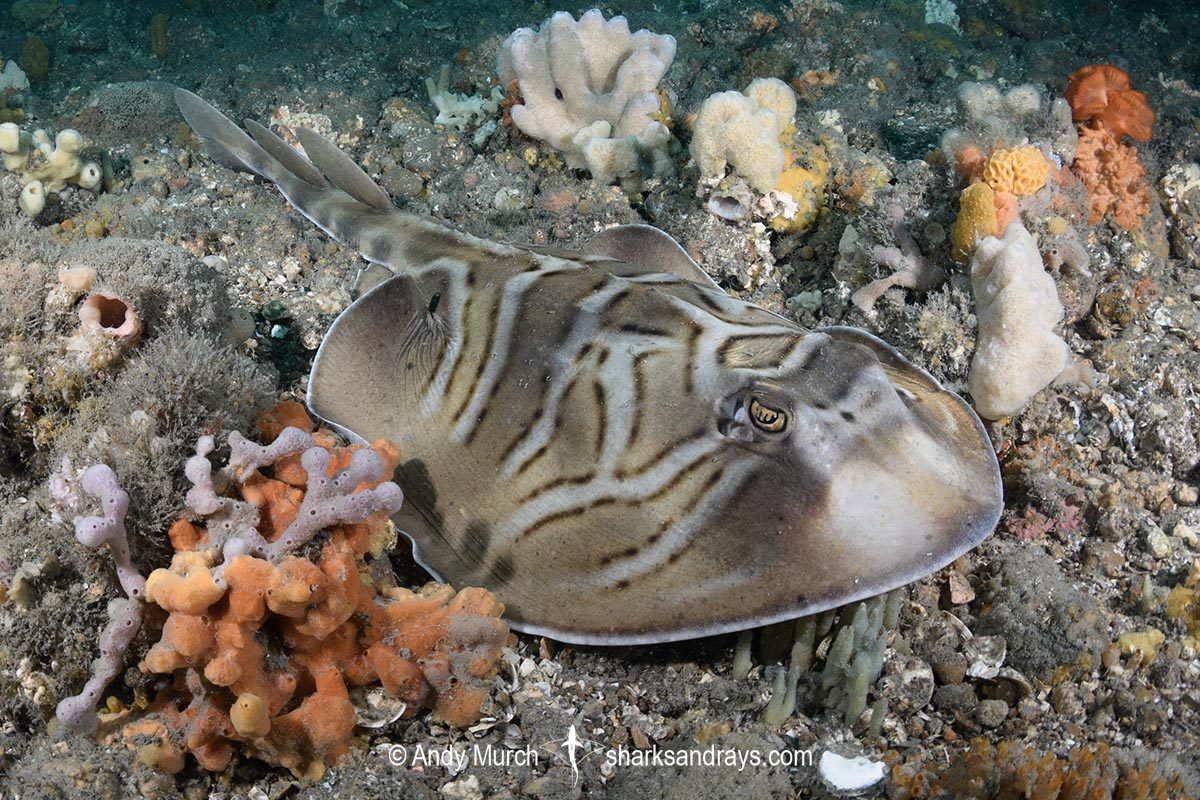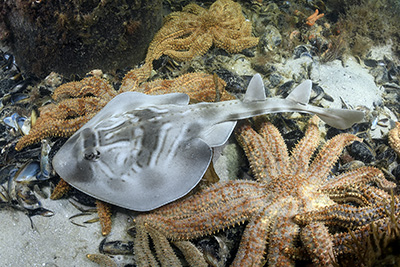Common name(s)
Eastern Fiddler Ray, Banjo Ray/Shark.
Identification
A large shovelnose ray with a sub-oval disc. Snout short and obtusely angular with a bluntly rounded tip. Snout length 4 x orbit length. Eyes small. Spiracles with one large, fleshy skinfold on posterior margin. Nasal curtain almost completely covers aperture.
Anterior margins of disc convex. Pectoral apices obtusely angular to rounded, posterior margins broadly rounded. Dorsum completely covered in small denticles. ~18 large thorn-like denticles along midline to first dorsal. Two short rows of thorns on each shoulder; outer rows slightly longer than inner rows. 1 or 2 pre and post orbital thorns.
Tail robust, 1.3-1.4 x disc length. Dorsal fins large and well separated, with narrowly rounded apices. Caudal fin triangular, without a defined lower caudal lobe.
Colour
Dorsum greyish light brown to yellowish-brown with large, diffuse, dusky or dark brown blotches and bars, and a variable pattern of roughly eye-width lines with dark brown edges. Post orbital intersecting lines form a triangle or diamond shape. Rostral cartilage somewhat pale. Ventrum and lateral skin fold on tail white.
Size
Maximum length possibly 120cm. ~25cm at birth.
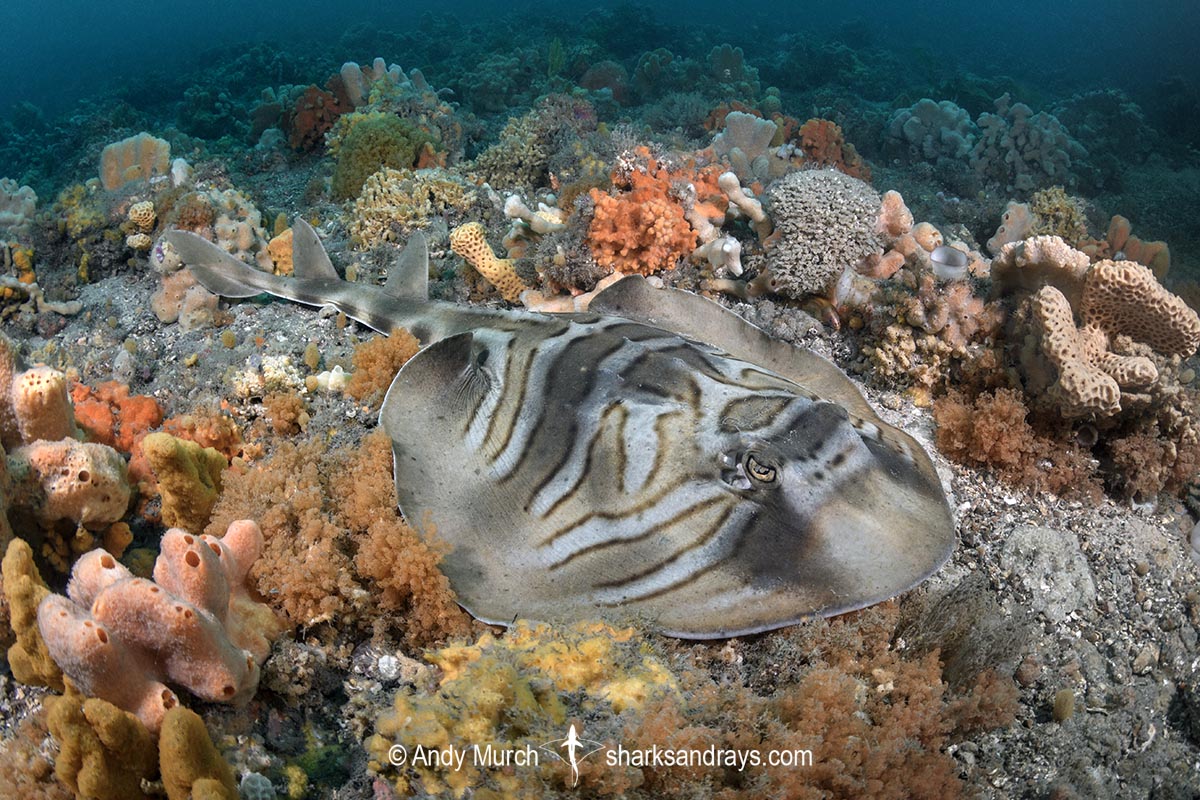
Conservation Status
LEAST CONCERN
Eastern Fiddler Rays are caught in a variety of fisheries along the east coast of Australia, including the Eastern Scalefish and Shark Fishery. Data from these fisheries suggest a decreasing trend, but overall catch per effort reports indicate that the population is fairly stable.
Trygonorrhina fasciata is generally released alive and is suspected to have a high post release survival.

Habitat
Sub-tropical and temperate seas. Benthic on shallow sandy beaches and seagrass beds. From close inshore to ~100m.
Distribution
Endemic to southeastern Australia. From southern Queeensland to at least Port Phillip Bay (personal observation) in Victoria.
Reproduction
Aplacental yolksac viviparous.
Diet
Feeds mainly on crustaceans; crabs and shrimps.
Behavior
In Nelson Bay, eastern fiddler rays are often found resting in areas of mixed sand and coral.
Reaction to divers
Very easy to approach. Rarely move away unless molested.
Diving logistics
Eastern Fiddler Rays are abundant in Nelson Bay, NSW. I have seen a dozen individuals on a single shore dive at Fly Point in January.
Although their range officially ends at the NSW/Victoria border, I have encountered this species in Port Phillip Bay within a loose aggregation of Southern Fiddler Rays.
What’s new
View our full list of updates
Similar species
Southern Fiddler Ray Extremely similar but distinguished by three longitudinal parallel white lines (that do not form a triangle) behind eyes, and less pre-dorsal midline thorns; ~15-16.

